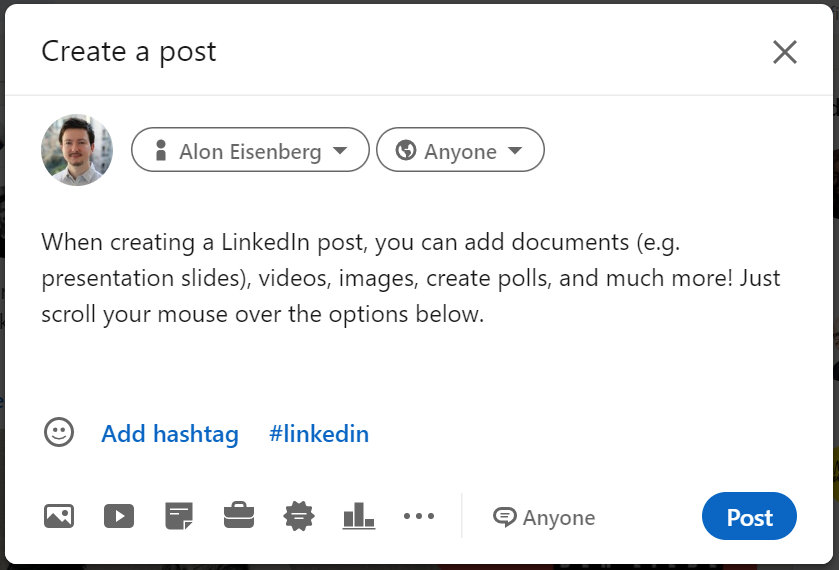SEO Tips for E-commerce: Improve Your Online Shop's Ranking in Google
SEO is an important tool for e-commerce businesses to bring in new customers. Here are the best tips for your online shop to rank higher in Google.

LinkedIn marketing can bring many advantages to your business, but it is often seen as too expensive. As with any social platform, there are organic and paid posts, so there are definitely ways to reach your marketing goals with LinkedIn for free.
You may have used LinkedIn for recruiting or staying in touch with your business contacts. However, with nearly 35 million users registered in the UK alone (and nearly 900 million users worldwide), the platform shouldn’t be ignored as a way to reach your audience whether you sell B2B or B2C.
With that in mind, we’ve prepared some tips for marketing on LinkedIn without paying!
Currently, nearly 35 million users are registered on LinkedIn in the UK. It is also very popular throughout Europe. Here are some stats from Statista regarding membership numbers across Europe as of early 2022:
If you sell in Europe, it’s clear that there is strong potential here. Even if LinkedIn is primarily a business-based platform, every employee in the world is also a consumer. Sharing information about your brand and/or products is totally fine here. In fact, it might be a welcome break to all the posts about optimisation and conversion rates, etc.
Obviously, you’re reading this article because you are curious about promoting your business on LinkedIn. Not only that, but you probably want to do it without paying much money (or none at all).
However, it may be worth considering trying out an ad campaign on the network. Although LinkedIn Ads are generally a bit more expensive than on other social networks, you can still choose how much daily budget you want to dedicate to those ads. You can also choose how you pay for your leads. For example, paying CPM, setting a bid on the auction, and other options.
Recommended reading:
LinkedIn Ads: 5 Beginner's Tips for Finding Success
The good news is that there are definitely marketing strategies for LinkedIn that are free. Let’s look at those tips now:
Step one is of course setting up your business’s LinkedIn profile. We won’t get into long details on this, but we’ll give a couple important tips to keep in mind:
It’s important to know how LinkedIn’s algorithm works in order to use it properly. There are several ways that users can interact with your posts, all of which should be somewhat familiar to you. For example, someone can “like” a post (with LinkedIn, quick reactions like Celebrate, Support, Insightful, etc. serve the same function as “likes”), comments, and shares.
Just like many other social media platforms, the algorithm “scores” your content based on the interactions people have with it. Different interactions carry different values. For example, a comment is worth more than a like, and a share is worth more than a comment.
Your post will then go through four phases of distribution, which is related to the degree of the connections you have with other members. For more information on your network and the degrees of connection, you can read about it here.
During the first phase of your post’s journey, it is shown to your first-degree connections. These are the people you have a direct connection to. Your post will be shown temporarily to this audience. If it performs well (with high engagement), it will move on to phase two.
In phase two, your contribution will be sent to your second-degree connections over the next few hours. Your post will again be analysed by LinkedIn’s algorithm and also checks to make sure your post is not spam.
In the third phase, the post is then shared with your third-degree connections for the next 24-36 hours.
In the fourth and final phase, your post will be analysed further by LinkedIn and its findings forwarded to the social media platform’s HQ for product development.
There are several ways to increase the interactions you have with your audience. For example, you can tag people in your posts. However, you should only tag people who are likely to interact with your content, so it’s not recommended to tag 2nd or 3rd degree connections.
Another thing you can do is to ask your audience questions in your posts and encourage people to add their thoughts into the comments section. Remember, comments are worth more than likes. Inspire them with a controversial statement or just ask their opinion: “Dark, milk, or white chocolate?” If you own a gaming shop, ask if they prefer Monopoly or Risk. You can even ask them a simple thing like “What piece of clothing that you own has a special memory attached to it?” The question doesn’t need to inspire controversy, it just needs to spark a conversation.
If you’re trying to inspire your audience to share your post, you might want to consider sharing a discount code. People like to share posts like that.
Here’s a great example of this. In the post below, the author of the post gives the readers a few interesting facts about LinkedIn content promotions. At the end, he says that if you leave a “Yes” in the comments section, you’ll receive more information and if you share the post, you’ll also get a special access code to their tool. As you can see, plenty of people shared and commented on the post:
This might be an effective post, but it’s not a perfect one? What struck you about this post? Did you also feel it was a bit long? You’re right. It is too long. No one wants to read a huge block of text when scrolling on social media, even on LinkedIn. Sam Browne states that ideal text post on LinkedIn is between 1,200 and 1,600 characters.
For reference, this sentence (everything in the yellow box) adds up to a total of 96 characters.
It’s worth noting that the first 90 minutes to 8 hours of a posts lifespan are crucial. Responding to comments within the next 12 hours or so is also important for the algorithm. It might be a good idea to stay logged in for a few hours after posting. If you manage to respond to 3 interactions, this will increase your reach by about 20%.
This can be a bit tricky. You’ve created a nice post, so naturally your instinct would be to include a link to your online shop. In the past, users had to add these links into the comments section because LinkedIn would “penalise” posts that included links. This trick no longer works though! If you are the first person to respond to your own post, your reach will decrease by 20%.

Shutterstock/Rawpixel.com
As LinkedIn still penalises for links inside posts, you’ll really have to ask yourself if you want to do that. Without a link, you can improve your brand image, but might be limiting additional traffic to your website.
Still want to add a link?
If you still want to add a link to your post, try waiting a bit before adding it into the comments section. Alternatively, you might just edit your post about an hour after posting and then include your link there. This second option will still penalise your reach, but less so than if you had included the link in your original post.
This is the final, but perhaps most important point we’ll discuss: the structure of your post. Remember, posting on LinkedIn is not only about the frequency of your posts. You also want to gather interactions to gain more visibility.
Start with something catchy, whether it’s the first sentence or the title of your post. Sometimes, it can help to find an interesting statistic to catch your audience’s attention: “There are 34 million LinkedIn users in the UK. How can you reach them?”.
At the bottom of your post, write a summary of what your link leads to or what the video is about. As a result, the readers will know what to expect and you can entice them to pay further attention to your content.

Source: LinkedIn
As was mentioned before: don't make your text too long. It is also a good idea to make your post a document post (2.2 to 3.4 times more reach), a poll (2.1 to 2.9 times more reach), a carousel (1.8 to 2.3 times more reach) or a text with multiple images (1.2 to 1.6 times more reach).
Good to know:
LinkedIn now provides a space for you to add hashtags to your posts (see the image above). It will even make recommendations based on the text inside your post. In the example above, it is recommending “#linkedin” as a hashtag since the term appears early in the post. You can also add your own. Make sure you think of terms people will actually search for on the platform. In some ways, it is much like an SEO strategy with search engines.
Beware: don’t over-stuff your posts with hashtags. Use somewhere between 3 to 5 hashtags.
Recommended reading:
How to Improve Your Social Media Marketing with Hashtags
As with most social media platforms, posting regularly is a good thing. You should aim for a minimum of two posts per week. Just make sure not to post too closely together. A 2022 study by Richard van der Blom shows that if you post a new post within 18 hours of another one, the growth of your posts will be negatively affected. This can be 15% to 30% less visibility.
Also, pay close attention to the time of publishing: From Monday to Thursday, 10 am is best and Friday to Sunday, 1 pm. Of course, it is still worth testing this yourself, but these are the best average times for posts to get interactions.
It is also important that you do not edit your post in the first 10 minutes. This can reduce your reach by 10% to 40%.
Want to boost the message?
If you leave 2 to 4 comments after 24 hours as a post creator, you will end up in the feeds again.
To summarise, here is how you can ensure that your LinkedIn posts reach a larger audience without having to pay for ads:
Remember, this is not a magic formula where you’ll see your numbers double overnight. This requires frequent posting and patience to build a network of engaged users.
This article was translated and adapted from our Dutch blog: LinkedIn-marketing voor je shop zonder te betalen
23/11/22SEO is an important tool for e-commerce businesses to bring in new customers. Here are the best tips for your online shop to rank higher in Google.
Valentine's Day has grown in popularity across Europe. We're sharing some romantic statistics (redundant, right?) and look at 9 marketing tips for V-day.